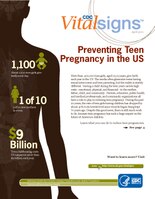
Photo from wikipedia
Objectives: The objective of this trial was to investigate the effect of educational short message service (SMS), or text messages, on excessive gestational weight gain (GWG) in a low-income, predominantly… Click to show full abstract
Objectives: The objective of this trial was to investigate the effect of educational short message service (SMS), or text messages, on excessive gestational weight gain (GWG) in a low-income, predominantly overweight/obese population. Methods: Participants (n = 83) were mostly overweight/obese women recruited at Special Supplemental Nutrition Program for Women, Infants, and Children (WIC) clinics on the island of O’ahu, Hawai’i at 15–20 weeks gestational age. The intervention group received SMS on nutrition and physical activity during pregnancy designed to help them meet Institute of Medicine (IOM) guidelines for GWG and American College of Obstetricians and Gynecologists guidelines for exercise, respectively. The control group received SMS about general health topics during pregnancy, excluding nutrition and physical activity. Both groups received one text message per week for eighteen weeks. GWG was defined as the difference between the last self-reported weight taken before delivery and participants’ self-reported weight before pregnancy. Differences between study groups were examined using t-tests and Chi-square tests. Linear regression models were used to examine association of GWG with study group and other factors. Results: GWG was similar (p = 0.58) in the control group (14.1 ± 11.4 kg) and the intervention group (15.5 ± 11.6 kg). The percentage of participants exceeding IOM guidelines for GWG was similar (p = 0.51) in the control group (50.0%, n = 17) and the intervention group (60.5%, n = 23). Conclusions: GWG was not significantly different between intervention and control groups. Trials that begin earlier in pregnancy or before pregnancy with longer intervention durations and varying message frequency as well as personalized or interactive messages may be needed to produce significant improvements.
Journal Title: Nutrients
Year Published: 2020
Link to full text (if available)
Share on Social Media: Sign Up to like & get
recommendations!